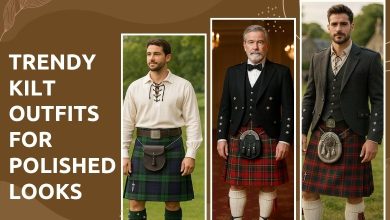The Role of Scottish Dirk Among Highlanders

The Scottish dirk is more than a knife. It is a part of Scotland’s history and culture. This special blade has been important in Highland life for many years. You can see it in museums or worn with Scottish clothes. The dirk tells a story of bravery, tradition, and pride. Highland warriors used the dirk as a weapon and a symbol. It was not just for fighting; it was also about showing who they were. Men often wore the dirk at special events, like weddings. It became part of Highland’s dress and showed their status and respect.Origins of the Scottish Dirk:
The Scottish dirk dates back to medieval times. At first, it was a long knife used by Highland fighters. Later, it became a nicer and more special weapon. Early dirks were simple and practical, used in close combat. The dirk was often used with a claymore, a big sword. The dirk was good for close fights, and the claymore was used in big battles. Over time, the dirk became more than just a weapon. It became a symbol of Highland pride. In the 18th century, dirks started to be made with more detailed designs. They were crafted with intricate patterns and decorations. This change showed how important the dirk had become in Highland culture. It was about showing off your clan’s style and status.
The Dirk as a Weapon of War:
The Scottish dirk played a key role in battles. Highland warriors were known for their strong fighting skills. The dirk was often used when they were close to their enemies because a sword was too big. It was sharp and deadly, making it a preferred weapon in many fights. During famous battles, like those of the Jacobite risings, the dirk was a common sight. Highland soldiers carried it with pride. It was a weapon that represented their bravery and fighting spirit.
Symbolism and Cultural Significance:
It’s a symbol of Highland identity. It represents strength, honour, and pride. In the past, it was a mark of a Highland man’s status. The dirk was worn with a formal dress. Ceremonially, the dirk was used in rituals and important events. It was a part of the Highland dress at weddings, ceremonies, and other formal occasions. The dirk’s presence added a touch of tradition and respect to these events. In Highland culture, the dirk also represented family and clan loyalty. Different clans had their styles and designs for the dirk. It became a way for Highlanders to show their clan pride and their connection to their heritage.
The Dirk in Highland Dress:
The dirk is an important part of traditional Scottish clothing. It goes with the kilt and other things. It can be decorated. At special events, like weddings and clan meetings, the dirk makes the clothing look even better. It’s about keeping a tradition. The dirk makes the wearer look special. There are many different kinds of dirks, showing different ranks and positions. Some are simple, while others are very fancy. Each kind tells a story about the wearer’s clan and their place in Scottish society
Craftsmanship and Design:
Making a Scottish dirk is an art. Traditional dirks are crafted with skill and care. They are made from strong steel and wood. The work is very careful, with pretty designs and patterns. Dirk makers are very careful. The handles often have Celtic knots and other things. The blade is sharp and balanced, so it is useful and beautiful. Dirks are different in different parts of Scotland. The styles are influenced by local traditions and tastes. The dirk shows the skill and art of its makers.
The Role of the Dirk in Clan Identity:
The dirk is a powerful symbol of clan identity. Each clan had its style and design for the dirk. This personalization made the dirk a unique marker of clan pride. This makes the dirk a unique mark for the clan. These dirks were passed down through generations. It becomes treasured family heirlooms. The dirk also played a role in the clan battles and feuds. It was a tool of war and a symbol of loyalty.
The Dirk in Modern Time:
Today, the Scottish Dirk is still important in Scotland. It is worn at traditional events like weddings and parades. Modern highlanders continue to use the dirk as a part of their dresses, keeping the tradition alive. The dirk is also a popular item for collectors. Many people appreciate its historical value and craftsmanship. It’s often displayed in museums and exhibitions. It showcasing its role in Scottish history. In recent years there has been a renewed interest in the dirk. More people are learning about its significance and craftsmanship. This resurgence helps to keep the tradition of the dirk alive for future generations.
The Dirk Etiquette and Protocol:
Wearing and handling a dirk comes with its own set of rules. There are traditional ways to carry and display the dirk, reflecting respect and etiquette. For example, it should be worn on the left side of the body, with the handle facing up. In formal settings, the dirk is treated with care. It’s a symbol of honour, so it should be handled respectfully. During ceremonies, the dirk is often displayed prominently, adding to the formality and significance of the event. Modern military regiments in Scotland also have their protocols for wearing the dirk. It’s a part of the ceremonial dress, and there are specific rules for its use during events and parades.
The Dirk in Scottish Art and Literature:
The Scottish dirk appears in many forms of art and literature. It’s featured in Scottish folklore, where it symbolizes bravery and heroism. Stories and poems often highlight the dirk’s role in battles and ceremonies. In art, the dirk is depicted in paintings and sculptures. These representations capture its beauty and importance. Artists use the dirk as a symbol of Scottish heritage and culture. Modern writers and artists continue to be inspired by the dirk. It’s a topic in novels, poems, and artworks, reflecting its lasting influence on Scottish culture and identity
Preserving the Legacy of the Dirk:
Efforts made to keep the tradition of the dirk alive. Museums and exhibitions focus on the history and craftsmanship of the dirk. They provide a way for people to learn about its significance and see historical examples. Educational programs and workshops also play a role. They teach people about the art of making dirks and the history behind them. It ensure that the tradition of the dirk continues for future generations. It’s a piece of heritage. By preserving its legacy, we honour Scotland’s past and keep its traditions alive.
Conclusion
Scottish dirk is a symbol of Highland pride. It was used in battles long ago and is still used in ceremonies today. The dirk shows strength, honor, and heritage. It is a big part of Scotland’s history. The dirk is a link to Scotland’s past. It reminds us of brave Highland warriors and the need to keep traditions alive. The dirk will always be a proud symbol of Scotland.



